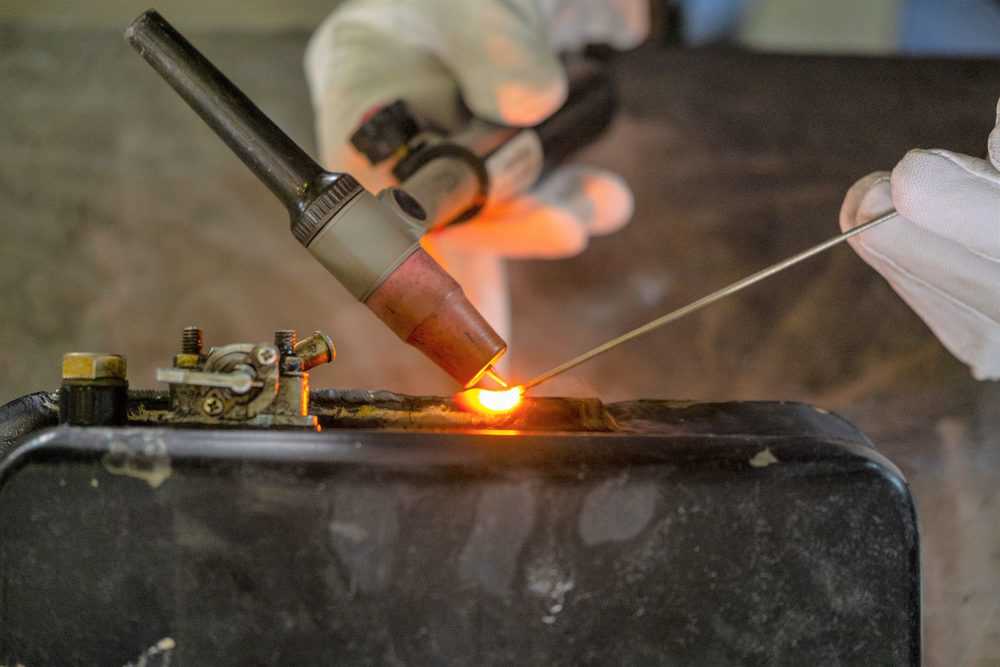Introduction
AC vs. DC TIG welding is a common debate among welders. When working on a welding project, choosing the right welding machine can be tough.
There are a ton of different factors you have to take into consideration before you choose your TIG welder.
Such as what kind of metal you’ll be working with, the nature of the project, and what kind of budget you have available.
If this sounds like something you’ve struggled with in the past, don’t worry – we’re here to help! This blog post covers everything you need to know about TIG vs. DC vs. AC TIG welders.
So, the next time you find yourself in this situation, you’ll have all the information you need at your fingertips. Let’s get started!
AC vs. DC TIG Welding
The main difference between AC and DC TIG welding is the current that is used to create the arc that creates the weld. This impacts the size and type of electrodes you can use, as well as the heat that the weld creates.
AC TIG welding is better for smaller, intricate pieces, while DC TIG welding is better for larger pieces with different joint types. While AC TIG welding is better for non-ferrous metals, DC TIG welding is better for welding ferrous metals.
TIG Welding
How does how TIG welder works? Tungsten inert gas welding is a kind of arc welding technique in which a non-consumable tungsten electrode is used to join two metallic bodies. Helium, argon, and other inert shielding gases prevent contamination of the weld joint.

Depending on the material, AC or DC output is used for TIG welding. AC is typically used for welding mild steel, stainless steel, and carbon steel, whereas aluminum and magnesium require an AC output. For more tips and tricks, visit WeldingMagazine.com.
What is AC TIG Welding?
AC TIG welding is an arc welding technique in which an alternating current (AC) is used to create a continuous electrical arc between a TIG torch and the workpiece that creates the weld.
AC TIG welding is used for welding non-ferrous metals (i.e., copper, aluminum, nickel, zinc, etc.), though it can also be used to weld steel.
The technique is unsuitable for welding stainless steel, as the lower temperatures used in AC will result in a brittle weld.
AC TIG welding is suitable for welding smaller pieces or intricate pieces that are difficult to reach, as the size and position of the electrode don’t impact the quality of the weld. AC TIG welding is suitable for both industrial and domestic applications.
What is DC TIG Welding?
DC TIG welding is an arc welding technique in which a direct current (DC) is used to create a continuous electrical arc between a TIG torch and the workpiece that creates the weld.
The technique is suitable for welding steel and stainless steel, as the higher temperatures in DC will allow you to melt the steel and stainless steel without any problems.
DC TIG welding is used for welding larger pieces and pieces that need to be held in a particular position relative to each other (i.e., car parts, machine components, etc.). DC TIG welding also requires a foot pedal or hand switch to start and stop the welding process.
What To Look For In a TIG Welder
When shopping for a TIG welder, there are many different things to consider. Here are a few of the most important things to keep in mind:
Welding capacity: This is the maximum thickness of the material you’ll be able to weld with your TIG welder. Remember, the thicker the material, the lower the amperage will be. So, if you plan on welding very thick materials, you’ll want to make sure your TIG welder has a high enough capacity to complete the job.
Duty cycle: The duty cycle refers to how many minutes the machine can be used before it needs to be allowed to rest for some time.
This is usually determined by the amount of amperage the machine can handle. So, if you’re welding thick materials, you’ll need a TIG welder with a high-duty cycle.
Controls: Does the TIG welder have a rotary switch? If so, is it positive or reverse polarity? These things can make a big difference in your welding experience.
Material: What materials will you be welding? In general, TIG welders are more versatile than other types of welders. But, some materials are still easier to weld with one type of welder over another.
Why Should You Consider Buying A TIG Welder?
A TIG welder is a cost-effective way to weld steel, aluminum, or stainless steel. This type of welder can be used for welding jobs that need to be done quickly, such as repairing pipes on the job site.
The TIG welder is also an option for welding thinner metals and thin pieces of steel. If you have experience with hand-welding, you’ll appreciate the simplicity of a TIG welder.
Furthermore, TIG welders can be more affordable than gas welders, making them an attractive option for DIY enthusiasts.
A TIG welder could be your best bet if you need to repair industrial equipment. Many people choose this type of welder because it’s easy to use and portable; it’s great when you need to weld in tight spaces.
Conclusion
The main difference between AC vs. DC TIG welding is the current that is used to create the arc that creates the weld.
AC TIG welding is better for smaller, intricate pieces, while DC TIG welding is better for larger pieces with different joint types.
AC TIG welding is a versatile technique used on various materials. While it is more versatile than stick welding, it is also more complicated and requires a higher skill level.





